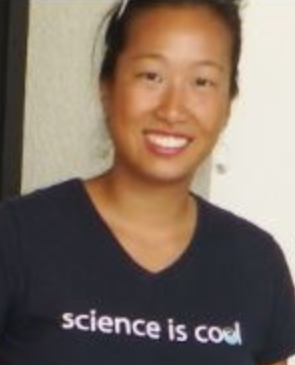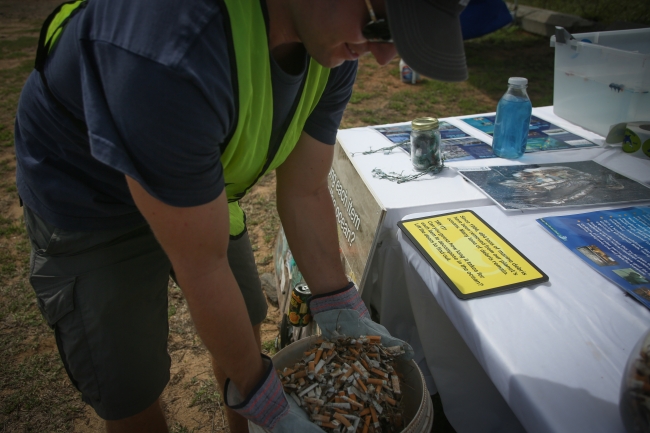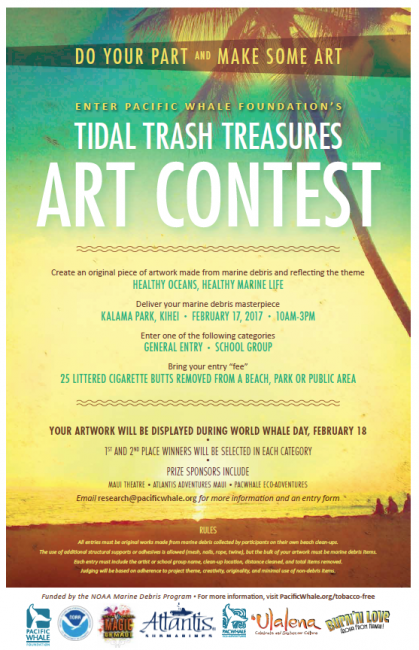

The Pacific Islands are full of sun, sand, and unfortunately… marine debris. Like many other coastal areas, the Pacific Islands are not immune to the impacts of marine debris. Due to the Pacific Islands’ position in the Pacific Ocean and in relation to the North Pacific Gyre and ocean currents, they are often inundated with debris from both local and far-off sources. Luckily, there are many great efforts underway to address and prevent marine debris in this area. Check out a couple newly-established projects funded by the NOAA Marine Debris Program:
Preventing marine debris is the ultimate solution to the problem, so Pacific Whale Foundation (PWF) is working to do just that! They’ve launched a public awareness campaign focused on tobacco-free beaches in Maui, Hawaii. To get the word out, they’re creating public service announcements, developing handouts and outreach materials, and giving presentations. PWF is also hosting an art contest to promote marine debris outreach and education. For more on this project, check out the project profile on our website.
Unfortunately, there’s enough marine debris out there that we also must work on removing it. To help clean our shores, Hawai‘i Wildlife Fund is leading an effort to remove as much debris as possible from over 200 miles of coastline on four different islands in Hawaii! Engaging hundreds of volunteers, they aim to remove approximately 55 metric tons (about 120,000 pounds) of marine debris! For more on this project, check out the project profile on our website.

There are lots of cool things going on in the Pacific Islands! Keep your eye on our blog this week for more, and check out our website for more interesting marine debris projects in the Pacific Islands and throughout the country!


